Substorms explained
Picture this. You’re out chasing the aurora in Fairbanks, Alaska watching a thin, faint arc stretching across the sky. Suddenly, this arc erupts with tiny, bead-like formations that start swirling and growing rapidly. In minutes, what was once a faint arc overhead and slightly drifting south is dancing, expanding north and spreading across the sky. The intensity of the aurora is so bright you can start seeing green colors, and a dancing fringe of purple appears on the bottom of a swirling mass of aurora that is now filling your entire field of view. After around ten minutes, you notice all the aurora is in the north now and shimmering as a bright curtain on the horizon. What you witnessed was an auroral substorm - the life cycle of an aurora with the culmination of a fantastic display of dancing colors like you always imagined.
Auroral substorms represent a sort of “life cycle” of an aurora that have telltale signatures. Knowing about these phases will make you a better aurora chaser, because while sometimes the aurora does seem to behave randomly, there is always a reason, and more often than not, it boils down to substorms. In this blog, I’ll tell you about auroral substorms and teach you how to watch for the different phases. This will make you a better aurora chaser and give you a better ability to predict the rhythmic dance of the lights.
Watch this fantastic real-time video of the aurora made by Adrien Mauduit showing auroral substorms in various stages.
Auroral substorms vs. magnetospheric substorms vs. substorms
Before this crash course in the solar wind and how its energy can couple with Earth’s magnetic system, I highly recommend you read my other blog posts on auroral forecasting and most importantly, download my Beginner’s Guide to Aurora Chasing e-book which you can get for free by becoming an e-mail subscriber. At the time of writing, there are over 25,000 of you all subscribed to my aurora alerts and educational emails! It’s awesome!

Okay, so what is this “auroral substorm?” First of all, we need to talk about semantics. The term “substorm” can refer to either a “magnetospheric substorm” or an “auroral substorm.” People use the generic term to usually mean both which happen at once, but the term “auroral substorm” really just means the auroral manifestation of what happens in a magnetospheric substorm. For example, a substorm signature seen in the GOES Magnetometers refers to a “magnetospheric substorm” since that instrument measures magnetic fields in outer space, whereas the auroral response seen by aurora chasers would be the “auroral substorm.” I mention this difference because in research papers, you will often see all three used interchangeably to describe the same process.
Magnetospheric substorms
Magnetospheric substorms occur when energy builds/grows in Earth’s magnetic shield (magnetosphere) then is released suddenly, recharging afterwards while another building phase begins. This energy comes from the solar wind. The Sun is a giant nuclear furnace in space blowing out a wind in the form of charged particles out of its atmosphere throughout the solar system.
Animation of the solar wind.
This solar wind carries with it a magnetic field (B). Any magnetic field, whether it be from your refrigerator door or the Earth, has a direction in space. In the case of solar wind, the interplanetary magnetic field (IMF) is described in a a coordinate system using x (positive/to the Sun or negative/away from the Sun), y (positive/east or negative/west), and z (north/positive/up or south/negative down).

Because of Earth’s solid-liquid core which is sloshing around, an intense magnetic field is produced which travels up to the surface and out into space, forming a protective magnetic shield around our planet. The shape of this magnetic field is like a bar magnet (dipole) with the field flowing out of the south pole, then north (up) in outer space, then diving back down over the north pole, through Earth’s core, completing the loop. Thus, the z-component (the part that is up and down in our coordinate system) of Earth’s magnetic field points north/positive. If there was no solar wind flowing past Earth, the shape of Earth’s magnetosphere would look like a near-perfect dipole field. If you’ve ever done the grade school experiment of iron filings on a sheet of paper with a magnet underneath, you know what this shape looks like.

Cartoon of Earth’s magnetic field. Credit: science-resources.co.uk.
But, because there is a solar wind constantly pushing on the side of Earth’s magnetosphere facing the Sun, that side is squished and the nightside is stretched out. This forms a tadpole shape like the wake of a boat streaming through water. The tail-like part of Earth's magnetic field is called the magnetotail.

Simulation of the Earth’s magnetosphere with magnetic field lines and the moon included. Credit: SciTechDaily.

When solar wind that has a B_z south-oriented magnetic field comes in contact with Earth’s B_z north-oriented magnetic field, just like bringing two opposite-polarity magnets close together, the two magnetic field lines snap together and transfer energy in a process known as “magnetic reconnection.” This is the main reason why B_z south is so important - it allows all the energy flowing in the solar wind to link up with Earth’s magnetic field.
When this magnetic reconnection happens on the Earth’s dayside (panels A-B in the figure below), there become two magnetic field lines that are open to solar wind. These lines are pulled over Earth's poles toward the magnetotail by the flow of solar wind. The movement of these field lines looks similar to someone doing a breaststroke.
As the field lines move further together on the Earth’s nightside (panel C), pinching together, this elongation of the magnetic field stretches out the magnetotail to long distances. In the GOES Magnetometer, this is when we start to see values plummet as the field drastically stretches out. Like the IMF, Earth’s magnetic field has a vertical component - the B_z. When the magnetotail stretches, it gets smaller and shorter, reducing its height and the B_z component. Thus, we see the graph plummet. While many animations and cartoons of this tail stretching usually only depict one field line, magnetic reconnection doesn’t just happen once in one place - imagine many field lines bunched together like a handful of cooked spaghetti all stretching back behind Earth. As these field lines become more and more stretched out, the bundles on Earth’s north and south poles move closer and closer together. Pressure builds. Like pulling back a bunch of rubber bands all at once, eventually, you will let go and the pressure will be released.
Like the magnetic reconnection on the Earth’s dayside, another reconnection event occurs on the Earth’s nightside (panel D), with the two magnetic field lines forming one closed loop with both footpoints rooted in Earth. When this happens, all the particles that were trapped on the open magnetic field lines are suddenly freed and slingshotted towards Earth (panel E). At this point, the magnetotail which was once stretched out very far suddenly returns to a more rounded dipole shape or dipolarizes, (“dipolar” meaning like a dipole and “izes” meaning becoming like something else). When you release a stretched rubber band slingshot, it naturally turns from a stretched shape to a more circular one. The same happens in Earth’s magnetosphere, and in the GOES magnetometer readings, this is the sudden “spike” we always watch out for.

Steps A-E of the Dungey Cycle. This figure comes from Eastwood et al. 2015 which is a good read if you want to learn more about the science of the magnetosphere. Note that this cartoon does not show the magnetotail stretching which is related to the build up of energy in Earth’s magnetosphere.
This entire process of dayside reconnection, nightside convection, and magnetotail reconnection followed by dipolarization is called the “Dungey Cycle,” and it is a fundamental property of Earth’s magnetosphere and the way by which most of the energy that ends up in the aurora is supplied.
Here is a classic video showing magnetic reconnection due to south B_z. While this video depicts magnetic reconnection and energy transfer during a CME. This process occurs during quiet solar wind conditions, too!
Here is Dr. Paul Cassack explaining magnetic reconnection and the Dungey Cycle.
Speaking of aurora energy, when these particles are slingshotted to Earth’s nightside, because they are still charged particles, they need to stick to the magnetic field lines (imagine cars (charged particles) driving on roads (magnetic field lines) that terminate over Earth’s poles). Thus, these particles end up streaming down over the polar regions, lighting up the auroral ovals, and causing a large intensification in the aurora which we see as the substorm expansion phase, a part of the “auroral substorm.”
What is an auroral substorm?

An auroral substorm is the manifestation of a magnetospheric substorm, and like magnetospheric substorms, auroral substorms have phases. In the following sections, I will describe the various stages of an auroral substorm from an entirely observational perspective. Stay tuned for future blog articles which will explore how to detect substorm stages using ground magnetometers and other data!
Growth

Growth phase arc over the Science Operations Center at Poker Flat Research Range near Fairbanks, Alaska.
The first phase of an auroral substorm is known as “growth.” Often, the aurora in the evening hours will begin as a set of mostly stationary auroral arcs stretching east to west across the sky. While they may have some rippling motions, they often don’t move much. These are known as “discrete” auroral arcs because they appear alone in the sky without any kind of other auroras around them.

A skinny, discrete arc seen at the Poker Flat Research Range near Fairbanks, Alaska.
These arcs can last minutes to hours and can vary in brightness. As energy grows in the magnetosphere, these auroral arcs will start to migrate from the poleward sky equatorward. In the northern hemisphere, moving equatorward is moving south, poleward is north. In the southern hemisphere, the equatorward sky is to the north, and the poleward sky is to the south. It’s the opposite. In Fairbanks, Alaska for example, it’s common to see these auroral arcs move from the northern sky overhead. Further inside the auroral oval, like in Yellowknife or Churchill, you may see the aurora move from the overhead position to the southern sky. Unless the entire auroral oval is already inflated, say for example, from a geomagnetic storm, from mid-latitudes under quiet/normal conditions, the growth phase may not look like much if anything at all. How long the substorm growth phase lasts depends on conditions that need separate blog articles to address, but anywhere from 1-3 hours is typical. During this time, discrete auroral arcs may also slightly fade away. This may happen due to the most of the aurora “potential” being held in the particles that are trapped in the field lines building in the magnetotail. With no particles to let go, the aurora fades, but behind the scenes, chances are actually growing for a big show!
Onset
Like I described in the beginning of this blog, all of the sudden, one of the discrete auroral arcs will suddenly intensify. Usually, this is the arc towards the most equatorward part of the sky. This onset of auroral brightness can happen in a matter of seconds and is usually marked by auroral beads - small lumps of auroral emission that grow from seemingly out of thin air. These auroral beads are fascinating and are actually a topic I am focusing on in my Ph.D. work at the University of Alaska Fairbanks!
Auroral beads usually last around 30 seconds to 2 minutes. Any longer, and they may just be a random rayed arc structure. Auroral beads also will brighten very quickly and lead to the next phase of the auroral substorm.

For the purposes of this blog, I don’t define onset as a phase since it only lasts a short time, like the shock of a CME.
Expansion
A giant aurora “cinnamon roll” seen during a substorm expansion in Fort Yukon, Alaska. South is to the right; north is left.
Immediately following auroral substorm onset with the auroral beads, the expansion arc may “break up” into many smaller, less-organized auroral structures that move towards the poleward sky.
The global picture
Usually, the onset of a substorm happens in a localized area of the auroral oval, then depending on how much energy is unloaded from the magnetotail, the surge of aurora can spread in either direction to the east and west, eventually petering out after some time. Powerful substorms can disturb the entire auroral oval even though the initial disturbance is relatively small, with waves of aurora spreading out over entire continents in the matter of minutes to hours.

This figure from Henderson, 2021 shows an auroral substorm as seen from space over time (moving left to right and top to bottom). From initiation at 1:56:46 (fourth image), you can see how the entire auroral oval becomes filled with active aurora within one hour as the substorm expansion spreads east and west.
If you are directly under the place where the substorm starts, you may see the growth phase arc form beads above you and the classic poleward expansion overhead, but if you are east or west of the substorm when it initiates, you may see a westward- or eastward-traveling surge of aurora. In Fairbanks, we sometimes see substorms approaching from the east where they first initiated over Yellowknife, and the AuroraMAX camera located there is one resource I always have pulled up alongside the usual webcams in Alaska.
Typically, the aurora will flow from west to east from the place under the auroral oval just before "magnetic midnight" - a spot opposite to the Sun when looking through Earth's geomagnetic pole. After this time, it will flow from east to west. There is a period of time around magnetic midnight when the aurora doesn’t flow too much in either direction which is called the “Harang Reversal” or “Harang Aurora.” The flow of an auroral substorm is determined by the direction of currents in upper layers of Earth’s atmosphere. These currents are related to the convection (Dungey cycle) and have an opposite direction of flow with a switch in direction around magnetic midnight of the auroral oval. Magnetic midnight for most areas under the auroral is 10 pm - 2 am LT. This magnetic midnight time varies with your location with respect to the geomagnetic pole as well as your local time zone.

In Fairbanks, in the spring (before daylight saving time), magnetic midnight is around 1:30 am. Then, when the clocks “spring ahead” in March to daylight saving time, it’s around 2:30 am. According to some statistical studies, substorms usually occur around 10-11 pm MLT, so in Fairbanks, we typically see substorms moving from the east to west around 11:30-12:30 am, then from west to east after that. These times are just rough guidelines for which directions substorms may approach from. I use this knowledge when setting up my cameras for timelapses in Fairbanks. In the evening, I will point my camera to the east to catch a substorm moving from Yellowknife, for example. In the early hours of the morning, I would expect a substorm to come from the west instead, so I will point my camera in that direction.
This is what an auroral substorm expansion looks like from space.
This idea of auroral activity spreading after substorm initiation is something I talk about in more detail in my blog article on the October 2024 severe geomagnetic storm. Specifically, how this fact affects the accuracy of the GOES magnetometers for substorm tracking.
But essentially, the main point is that a substorm is a localized enhancement of the aurora which can then spread out around the world. Just because you don’t see auroral beads does not mean a substorm is not coming, it may have just initiated further east or west of you and needs time to spread throughout the auroral oval.

In this photo, a surge of aurora is seen on the eastern horizon (camera facing east). This is sometimes called a “westward traveling surge” if it is associated with a substorm expansion traveling in your direction. This image was taken at 9:38 pm AKST on February 15, 2023 - an “early” substorm.
During this phase, you may see auroral streamer-like formations stretching from north to south as the aurora swirls overhead and to the pole. Expansion phase aurora can be fast-moving, dynamic, bright, intense, and colorful. During the aurora growth phase, most particles entering Earth’s atmosphere have around the same energy, or are “monoenergetic.”

Substorm expansion seen near Wiseman, Alaska with tall auroral curtains displaying a rainbow of colors. Looking southeast.
This means they all have enough energy to fly down to the altitude of 100-150 km above ground where they produce green glow as they strike and energize the nitrogen or oxygen in Earth's atmosphere. If you’ve ever noticed auroral arcs usually don’t have much red above them, this is why! During the substorm expansion phase, particles with a wide range of energies rain down into our atmosphere. There are also a lot more of them than during the other auroral substorm phases. This means that the greens become brighter but so do the high-altitude red emissions caused by low-energy particles and the pink lower border caused by high-energy particle precipitation! If you’re directly underneath the aurora, it can be hard to see through all the green and pink dancing to notice the intense reds up top, but from a distance, it is obvious.
Watch an explosion of red auroral emission during this substorm expansion recorded from South Dakota.
Light produced at higher altitude can be seen further away. That means some of the intense auroral substorms at high latitudes can be visible many hundreds of miles away, often creating visible displays for mid-latitude observers. During geomagnetic storms, even auroral ovals slightly extended to latitudes close to the U.S.-Canada border, for example, can become active enough during substorms that red horizon glow may be seen from U.S.-Mexico border states. In 2024, there were a couple moderate geomagnetic storms (e.g., Kp 5-6) with very low-latitude auroral visibility (e.g., California, Arizona, Nevada, etc.) but only for a few moments during the peak of the substorm expansion phase. The reason why the green, lower-altitude emissions are not visible from these low latitudes is because the curvature of the Earth blocks this light.

Looking south near Fairbanks, Alaska at an approaching substorm expansion. This image was taken during a G3/Kp 7 solar storm when the main auroral oval had pushed overhead and slightly south of Anchorage over 250 miles away from my location.
The expansion often concludes with a sudden brightening of the poleward aurora known as a “poleward boundary intensification.” Many chasers mistake this for another substorm expansion, but this is sort of the “last hurrah” before the next phase begins.
With all this said, the short of the long is that the substorm expansion phase is the aurora you see in viral videos, posted most on social media, and it’s the aurora everyone “thinks of” when they imagine the phenomenon and begin planning a trip.
Recovery

Pulsating aurora after a large substorm in Fairbanks, Alaska. Camera is facing west.
Substorm expansion phases usually last around 15-30 minutes, and in that time, the magnetosphere dumps a large amount of energy into the aurora all at once, analogous to a bucket of water tipping over suddenly or a rubber band snapping. In the rare cases of sawtooth events or during extreme geomagnetic activity, it may be possible to observe multiple substorm expansion phases back-to-back with almost no recovery time, but usually, there is a 1-3-hour period where aurora seems to die down and fade out. This is the recovery phase. In the recovery phase, a new types of auroral phenomena appear, the most notable being pulsating aurora. Expanding from the equatorward sky and filling most of the auroral oval, large patches of aurora blink on and off with periods of usually 1-10 seconds. Sometimes, the pulsations are extremely pronounced, and from the side, pulsating aurora looks like flames moving from the bottom to the top of individual patches.
For this reason, pulsating aurora is often called “flaming aurora,” or “flaming furnace” aurora. To the eye, this aurora can look colorless and faint. Many aurora chasers mistake pulsating aurora patches for wispy clouds, but if you take a picture, you will see the entire sky full of structured, green patches. Pulsating aurora may also turn into diffuse aurora as the recovery phase progresses. The definition of diffuse aurora is, you guessed it, diffuse, but I usually think of it as a green haze across the sky without much structure or movement. To the eye, it looks like a haze or smoke across the sky. Diffuse aurora can also appear during the growth phase of substorms slightly equatorward of the discrete arcs as a proton aurora signature. Black aurora may be visible during the recovery phase and persist for a few hours. These are patches of dark sky within diffuse aurora that have no aurora or airglow emission. Diffuse aurora may also take the form of omega bands which are large 1000 km-scale swirls of aurora literally shaped like the Greek letter omega.
Pulsating and black aurora seen in Fairbanks, Alaska captured with the AurorEye.

Diffuse aurora in Iceland. Camera is facing east. This occurred after a small substorm.
In the recovery phase of substorms, SAR arcs and STEVE may also be visible. STEVE is technically not an aurora since its light comes from superheated gases in the upper atmosphere, like how metal glows “white-hot” when it is at high temperature. Often accompanying STEVE is a feature called the “picket fence,” which looks like a green picket fence because of the evenly-spaced fringes of green emission.
Statistical studies have found that STEVE almost always appears in the recovery phases of substorms, and if the aurora seems to be pulsating to the north (if you’re at mid-latitudes in the northern hemisphere), STEVE usually emerges overhead running east to west. If you notice the aurora go through a substorm expansion phase, there is always a chance you will see STEVE make an appearance! It’s not known how often STEVE appears after substorm expansion phases. I have only seen it a few times in North Dakota and only once in Alaska. STEVE, generally, is considered a “subauroral” phenomenon, though, so it is most frequently seen over areas like the U.S.-Canada border and southern FInland, Sweden, and Norway.

An image of STEVE and the picket fence. Credit: NASA/Catalin Tapardel.
Want to explore the classic substorm papers that formed the foundation of auroral physics? Check out Aurorasaurus Journal Club episode 3 and episode 4 for a breakdown of The Development of the Auroral Substorm by Syun-Ichi Akasofu published in 1964.
Can you forecast the aurora just by looking at it?

Maia leading a group of tourists on an aurora tour in Fairbanks, Alaska. Need an aurora tour? Check out all the tours I recommend! Photo captured by Andy Witteman.
When I first became interested in the aurora and heard of aurora guides who just “had a feeling” the aurora was going to brighten up or knew just by looking at the aurora that things were “done for the night,” it always made me wonder… These people had no knowledge of space weather or how to read any kind of data other than Kp, so how were they so confident? When I read the early papers from Akasofu and matured in my studies, learning about substorms, then it clicked.
While they didn’t know the technical terminology, over time, these guides had become tuned in to the substorm cycle and the regular patterns of auroras. And it’s true, with just your own two eyes (although an all-sky camera webcam is very helpful to have), you can get a “feel” for what phase of the substorm cycle you are in and thus whether you should anticipate increased activity or not.

Typical progression of an auroral substorm from growth to expansion to recovery. Timestamps are provided, and the camera is facing west in this sequence.
Assuming you are underneath the auroral oval, seeing thin, discrete arcs in the evening usually means you are in the growth phase and gearing up for an expansion later in the night. If you see the aurora explode across the sky, starting with auroral beads, expanding overhead and to the poleward edge, you have witnessed a substorm expansion, and on most nights after that, there isn’t much else. After the expansion phase, I usually tell people it’s time to take a nap or relax unless they are huge fans of pulsating and diffuse aurora. From these substorm phases, then, you can anticipate what may come next in the aurora over the coming hours.
Timing matters

An auroral substorm expanding poleward. Photo taken by Maia Hartwigsen near Glenallen, Alaska. Camera facing west.
Often, on nights when the solar wind is more enhanced (higher magnetic field strength), the substorm phases may be shortened and shifted a bit earlier in the night. On quiet space weather nights (say, v=400 km/s, B_t = 4-7 nT, B_z variable from -2 to 2 nT), in Fairbanks we usually start to see any kind of aurora around 10-11 pm. This is the growth phase with discrete arcs forming in the north sky gradually marching overhead in time for an onset and expansion phase around 1-2 am. Recovery, then lasts the rest of the night until sunrise.
But, add some enhanced solar wind into the equation (say, v=500 km/s, B_t = 7-10 nT, B_z variable from -8 to 8 nT with sustained south B_z for multiple >1-hour periods), and the growth phase may begin at 9 pm with onset at 11 pm followed by recovery, a new growth at 1 am, and a second onset at 2-3 am, with a second recovery phase persisting until sunrise.
These are just the local times I have noticed for Fairbanks, but keep in mind they will not be the same times for other locations under the auroral. For example, activity in northern Scandinavia tends to peak on the earlier side compared to Fairbanks.

On this night in late September, discrete auroral arcs were visible immediately after sunset (light is still glowing on the horizon to the right) since space weather activity was so high. Kp was 6 on this night, to give you an idea of the overall “state of things.”
More active space weather can cause more substorm cycles over the course of a night with timings a bit earlier than usual. On nights where there are geomagnetic storms, we sometimes see 2-3 substorms with short recovery phases in-between (sawtooth events). This blog focuses on substorms under the auroral oval on relatively quiet nights. All this is to say that while you can chase the aurora using only an allsky camera or your own two eyes, it helps to have a bit of context from other sources, including solar wind.
Forecasting auroral substorms

Substorm expansion over Fairbanks, Alaska. Camera facing east.
While we can tell when potential for a substorm expansion is building by looking at the formation of the aurora in the sky, the GOES magnetometers, or even ground magnetometers, forecasting the exact moment onset takes place is a challenge. In the scientific community, this question of what triggers substorm expansion onset is hotly debated. However, “northward turnings” are one solar wind signature that scientists agree can trigger onset (Blanchard et al. 2000). What this refers to is a sudden change of the B_z from south to north (negative to positive) after an extended period of south B_z. During B_z south conditions, energy builds up in Earth’s magnetotail, but without some kind of perturbation (shock to the system), it can’t release. While this slingshot can be let go spontaneously, a sudden change from south to north can trigger a large injection of particles that becomes the auroral substorm expansion phase. Therefore, especially after a long, 1-2 hour period of south B_z, although it may feel wrong, it is okay to wish for the solar wind to turn north. If B_z stays south for too long, the magnetosphere may enter a special state of “steady magnetospheric convection” (SMC; McPherron et al. 2005) which can cause the growth phase to stagnate for some time. It may also start a chain of substorms occurring every 2-4 hours called a sawtooth event. For a more in-depth explanation of SMC, check out my blog article on the October 2024 geomagnetic storm.
When the B_z tilts negative for around an hour, this is a good indicator that energy is starting to charge in Earth’s magnetosphere. A substorm expansion may then come an hour or two later. This pattern in the solar wind tends to happen a couple times over the course of a night under quiet, average solar wind conditions, which is partially why we typically see 1-2 substorm cycles per night. The B_z needs to be south for at least 15 minutes for the energy in the solar wind to be properly stored in the magnetosphere. Any less, and it’s like trying to charge your phone when there’s water in the charge port, flashing between “charging” and “not charging” and not really increasing the battery capacity.
In the image below, I have overlaid B_t/B_z solar wind data on top of GOES magnetometer data. The times are aligned, and the yellow dashed line shows a substorm in GOES. The same time is marked in the solar wind plot about an hour earlier since solar wind is measured at L1, and it takes time for that material to travel to Earth (about an hour at 400 km/s). You can see that after the B_z was south for around an hour, a substorm spontaneously occurred. You don’t necessarily need a northward turning for substorms - they can happen without any kind of external trigger when B_z has been south for some time.

While an oscillating B_z can trigger substorm onset, if it changes from south to north too rapidly, the magnetosphere may not be able to build up enough energy to release a large amount of particles during the expansion phase.
For high-latitudes, coronal hole high speed streams (CHHSS) can create particularly “substorm-y” space weather. This is because especially during the CIR (compression) phase, there can be coherent (relatively long-lasting) B_z structures oscillating back and forth from positive to negative every 1-2 hours. These extended periods of south B_z charge up the magnetosphere with energy that can be released over a substorm cycle. During the high speed stream-phase of the CHHSS, although B_z can oscillate back and forth more quickly (sometimes only staying negative for 20-30 minutes), the higher speed means the magnetosphere can charge quicker.
Storms vs. substorms
I frequently get asked “So, what’s the difference between storms and substorms?” referring to geomagnetic storms or an idea that there is always an “aurora storm” going on. Well, first off, there is no such thing as an “aurora storm.” In the past, I have made the analogy that a substorm is like a tornado in a thunderstorm since it is the most intense part of the event and can form rapidly, but this is assuming every night there is some background “precipitation” or “thunderstorm” of aurora. There is no actual scientific term relating to an aurora “storm.”
Geomagnetic storms on the other hand officially occur when the Kp index exceeds 5 (for a minor geomagnetic storm), increasing severity. Kp 9 is the maximum value a geomagnetic storm can receive, but its intensity can grow beyond that. When global geomagnetic activity becomes enhanced, perhaps from a larger event like a CME (learn more about CMEs here) or high speed stream, the auroral ovals typically expand and move to lower latitudes. This is without the influence of substorms, which can be embedded within a geomagnetic storm. Geomagnetic storms are typically events that last hours to days whereas auroral substorm expansion phases only last 15-30 minutes on average. Geomagnetic storms also affect the entire auroral oval whereas auroral substorms start as localized enhancements.
So while geomagnetic storms and substorms can occur together, and geomagnetic storms may encourage larger, more intense substorms, they are two separate phenomena altogether.
The takeaway

Westward traveling surge from the eastern sky in Iceland.
While you probably know more than you ever wanted about substorms, my hope is that now you understand that on a typical night, the aurora does not just randomly spark up and die down. Sure, there are always some surprises, but most of the time, the aurora follows the substorm cycle which you can use to gauge what it will do next. Just being outside watching the aurora can tell you a lot about what it will do next. Stay out long enough, and you will likely experience a substorm expansion phase at some point. All this requires no knowledge of space weather data. Having additional information from the GOES magnetometers, solar wind, and nearby webcams can make you a more efficient and confident aurora chaser.
Acknowledgements
I would like to thank Tanya Melnik for helping me edit this blog post.
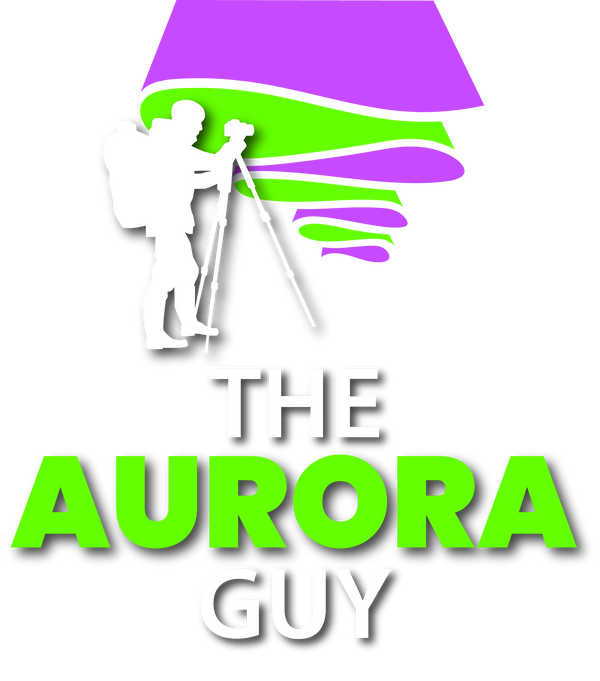
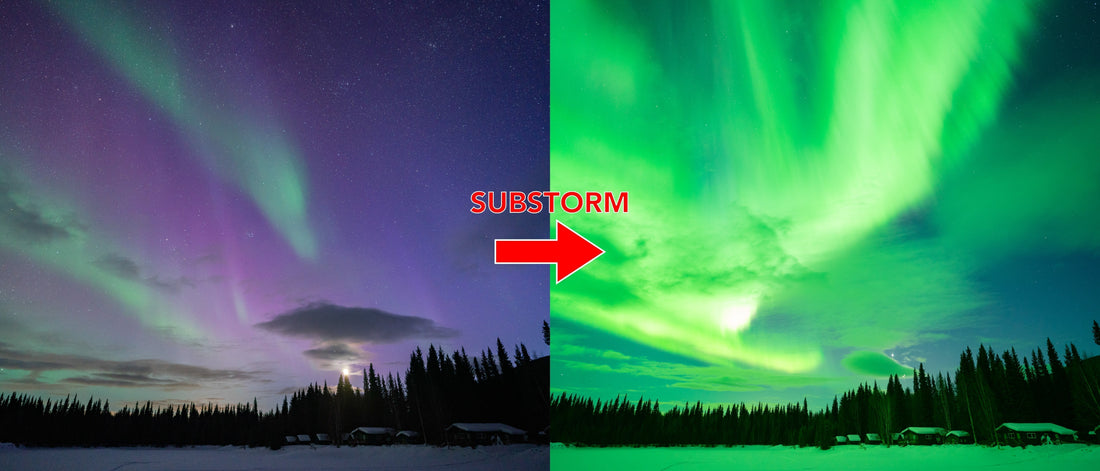
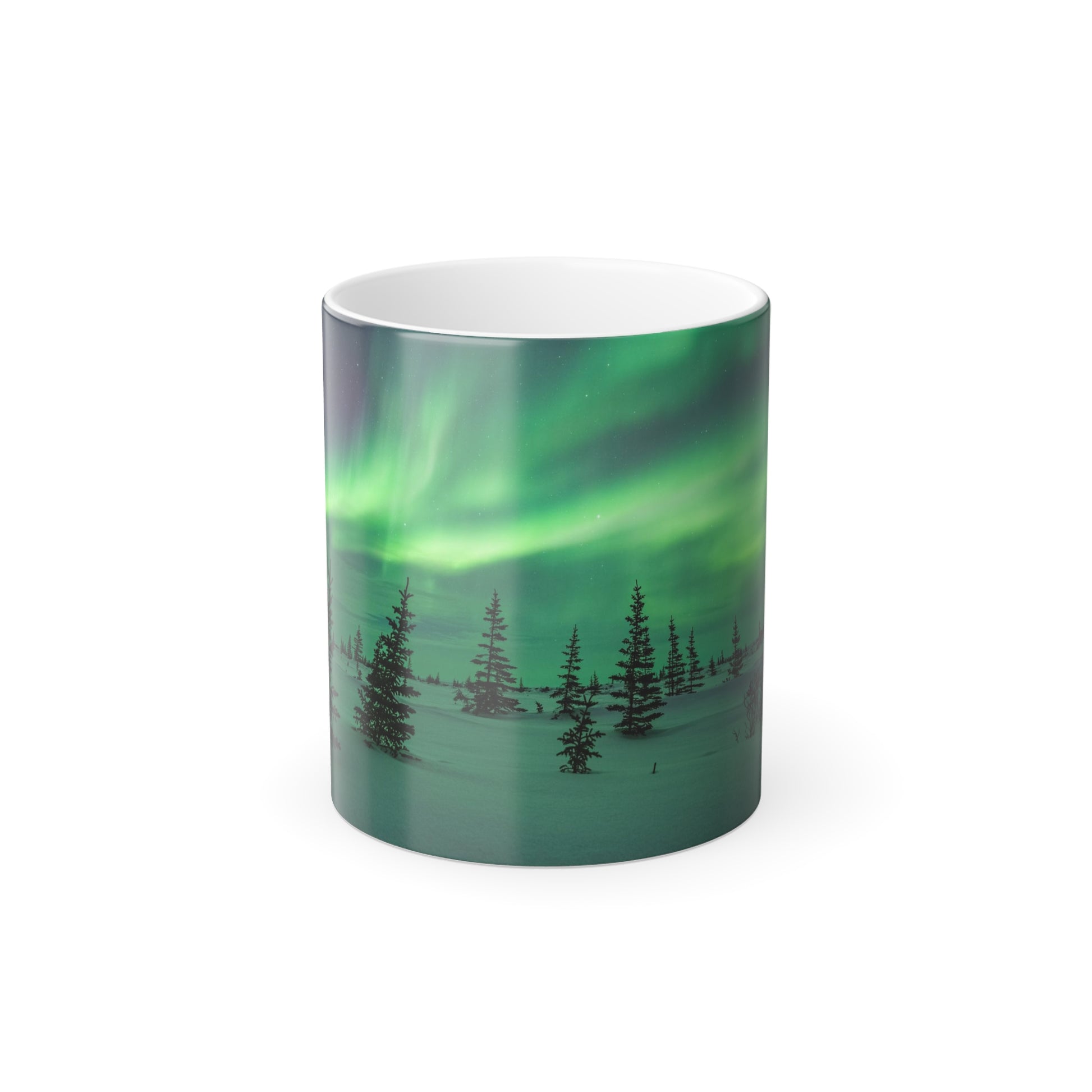

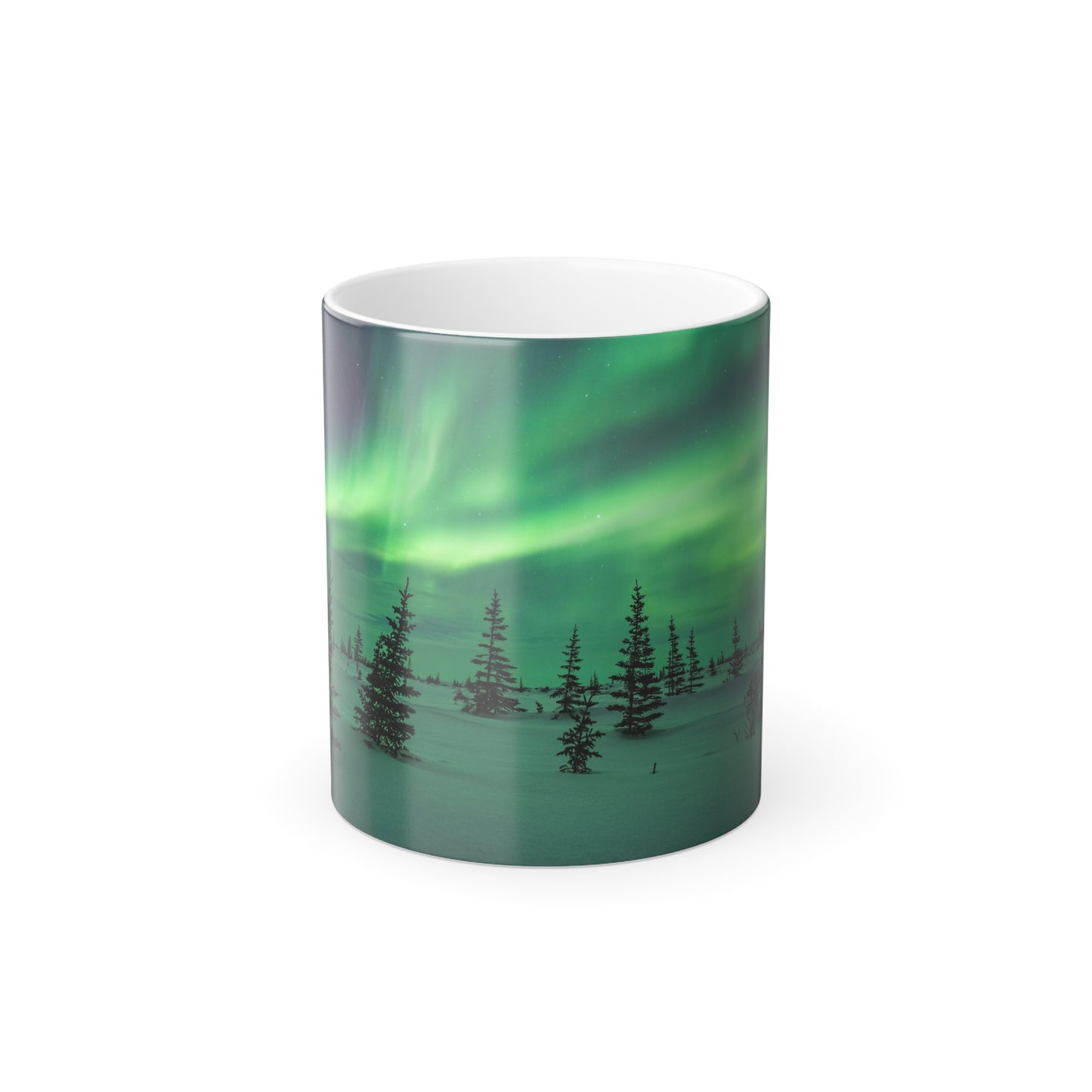

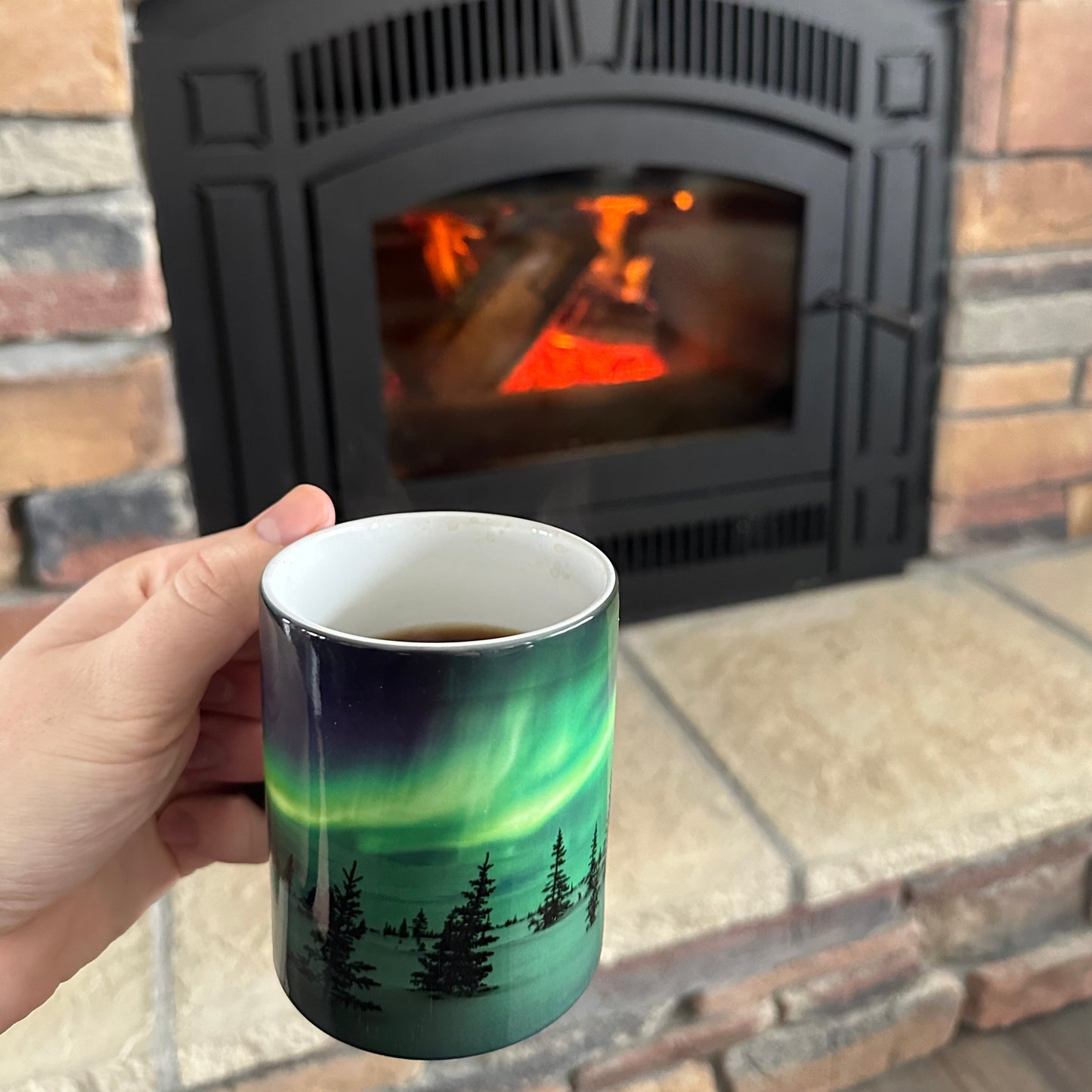



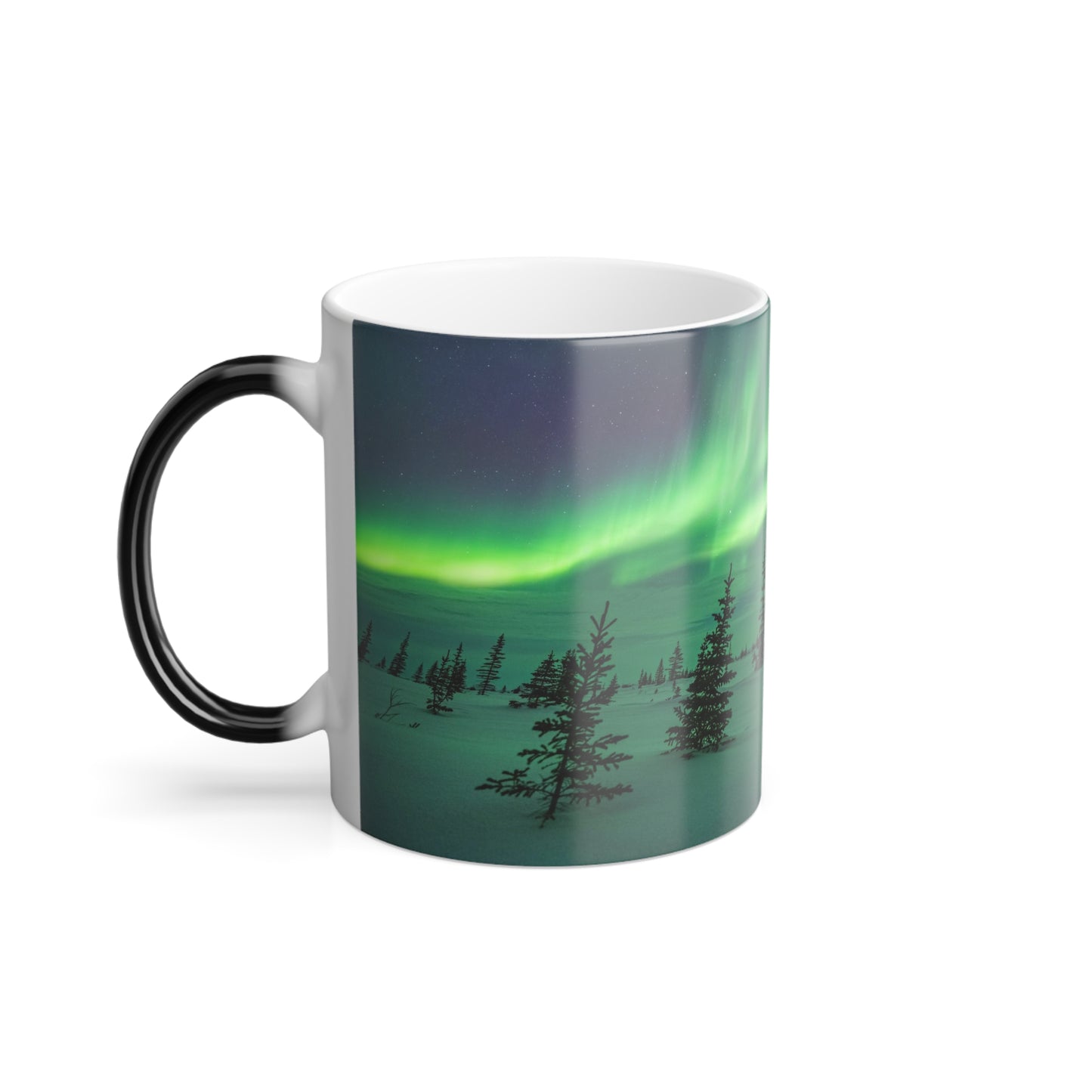

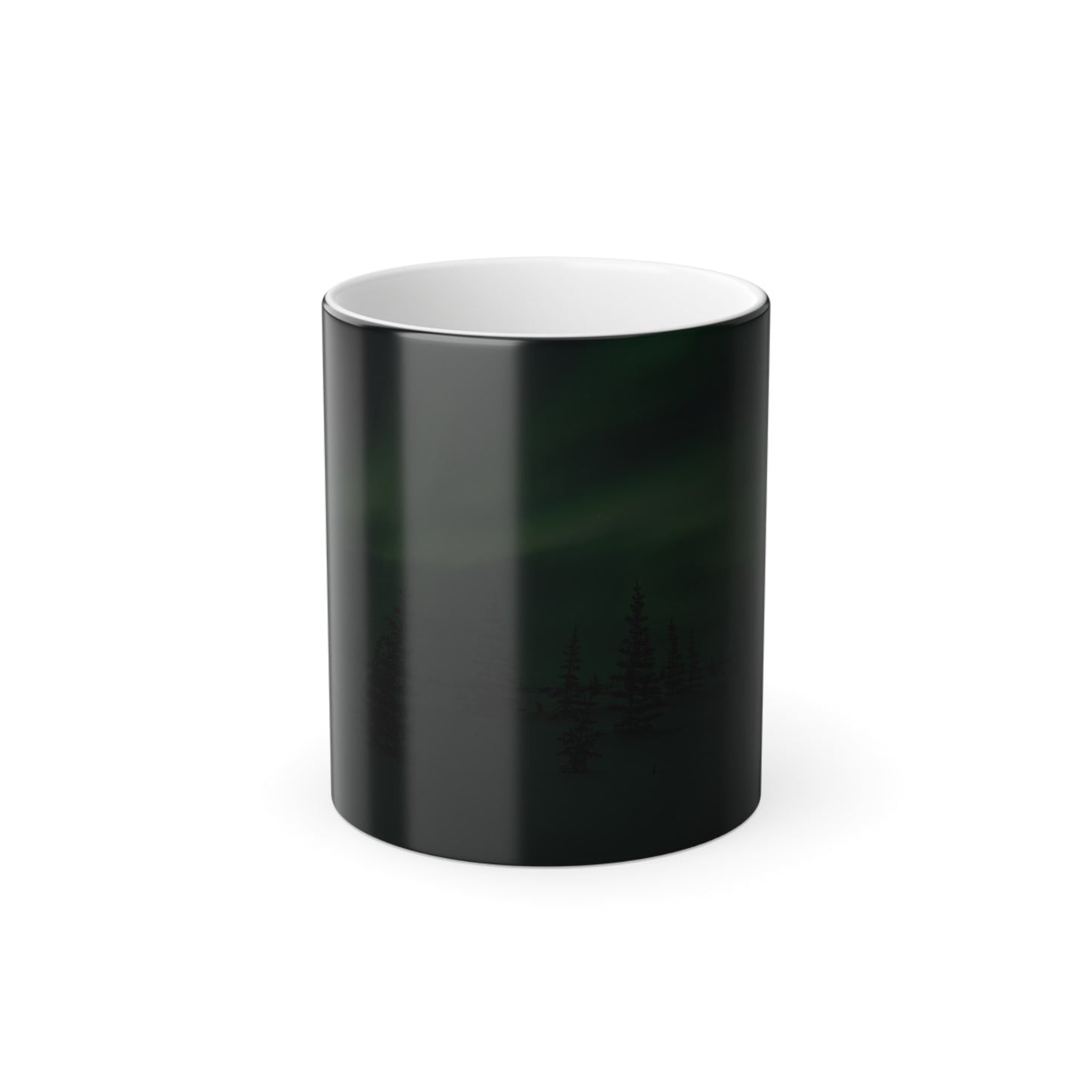
4 comments
Fascinating and informative!
Im sorry, lol i dont want to embarrass myself later on, so if you could please delete my comments sometime in the near future, that would be cool. (i had no idea it would actually post it here!)
thanks Vincent!
But for real, this was actually a very good read! and it was nicely done too. Way better than anyone els- oh wait, there is nobody else doing this, now that i think about it haha.
man, is UAF the only place in the whole entire world? probably.
thank you for your service.
Really great work here! -only thing that I would have added was more into detail with the local magnetosphere.
-As our planet’s inner-molten core has localized magnetic flux circuitry going in and out of the north and south poles.
This is Uncle Eddy’s Current Donut Ring
And Eddy’s Currently circulating everything right back into himself, staying in near-field. Always.
This is the driving force which depends on whichever pole is nearest to the sun, and as of right now, the northern pole is further away than the souther pole. -This explains how it is able to accelerate the sun’s charged part-tickles which are very densely, uniformely linear by the time they are near Eddy’s current donut ring; which is the ‘driving’ force of attracting the ‘resistance’ faster on their way outwards, while partially losing their pole-heirity status. These ions are now returning back to the sun while they still following along the 2-way neutral pathway back towards the sun.
And the sun is doing the same exact thing, but completely opposite.
It’s exactly like how a Constant Variable Transmission is continuously varying itself & one another to maintain balanced equillibriums. right?
While the tension never changes inbetween them as they only work off of one another, despite never being equal at all.
And this might be another reason to speculate that it has something to do with our orbital trajectory going around and ‘round the sun, in the most stablized, eccentric orbital path there is while using the least amount of wasted energy in order to do so. haha
This why I know that there is no barycentric point thats ’wobbling’? because eccentricty says ⭕️𝘵𝘩𝘦𝘳𝘸𝘪𝘴𝘦
sorry for getting a bit too carried away here. just wanted to add in the eddy current siphoning effects being biased towards the closest pole.
so the rest can be easily analogized with swirlies and chirality maintaining constant flow rates, and stream lined snaking. right? idk